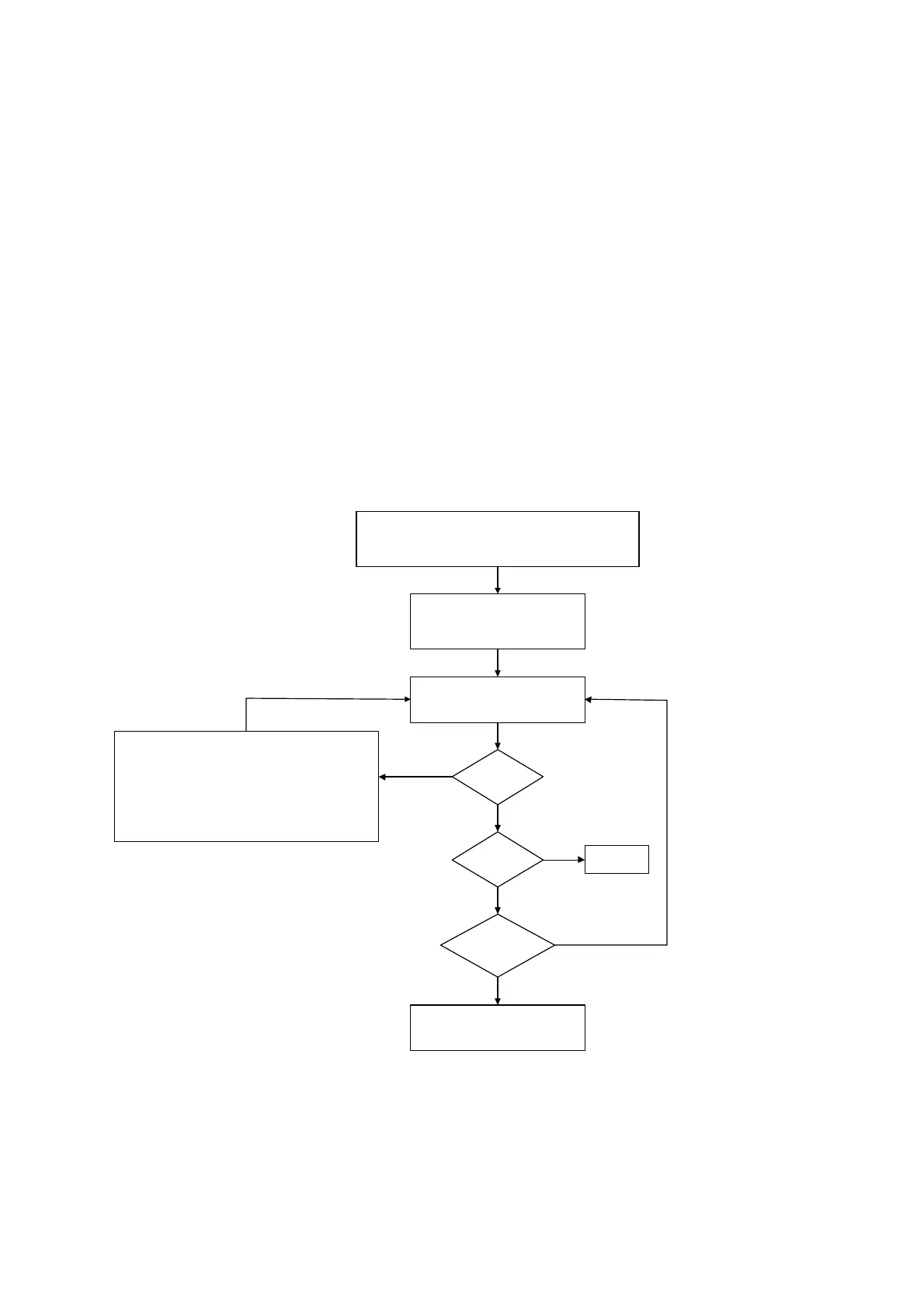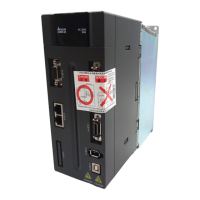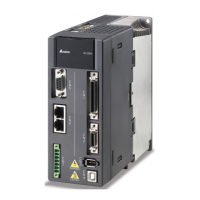Chapter 5 Trial Operation and TuningASDA-A2R Series
Revision December, 2014
5-15
5.6.3 Flowchart of Auto Tuning
Description of Auto Tuning:
Set P2-32 to 1. Continue to estimate the system inertia. Automatically save the value in
P1-37 every 30 minutes and refer the stiffness and bandwidth setting of P2-31. Increase
the value of P2-31 to increase stiffness or decrease to reduce the noise. Continue to tune
until the performance is satisfied. Then, tuning is completed.
P2-31Stiffness setting in auto tuning mode (The default value is 80), the bigger the value
is, the stronger the stiffness will be.
In auto and semi-auto mode, the bandwidth setting of speed circuit is:
1~50Hz: low-stiffness, low-response
51~250Hz: medium-stiffness, medium-response
251~850Hz: high-stiffness, high-response
851~1000Hz: extremely high-stiffness, extremely high-response
Servo off. Set P2-32 to 1. Then, Servo on.
Set P0-02 to 15. The panel
will display inertia ratio.
Alternately accelerate and
decelerate.
Any
resonance?
Satisfactory
performance?
High response
is required?
Increase the value of P2-31
to increase the response and
stiffness.
Tuning
completed.
1. Decrease the value of P2-31 to reduce the
noise.
2. If not decrease the value of P2-31, then
adjust the value of P2-23 and P2-24 to
suppress the resonance.
(Please refer to Chapter 5.6.6)
Yes
No
Yes
No
Yes
No
Note: Inertia ratio is for rotary motor; while total weight of movable section and load (kg) is for linear motor

